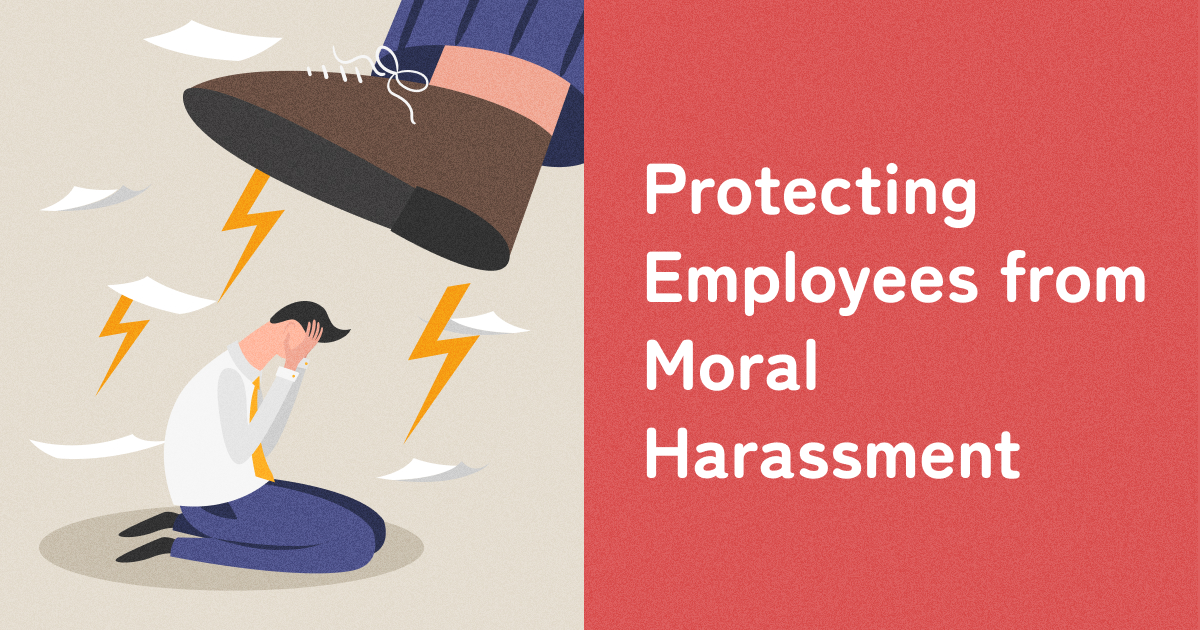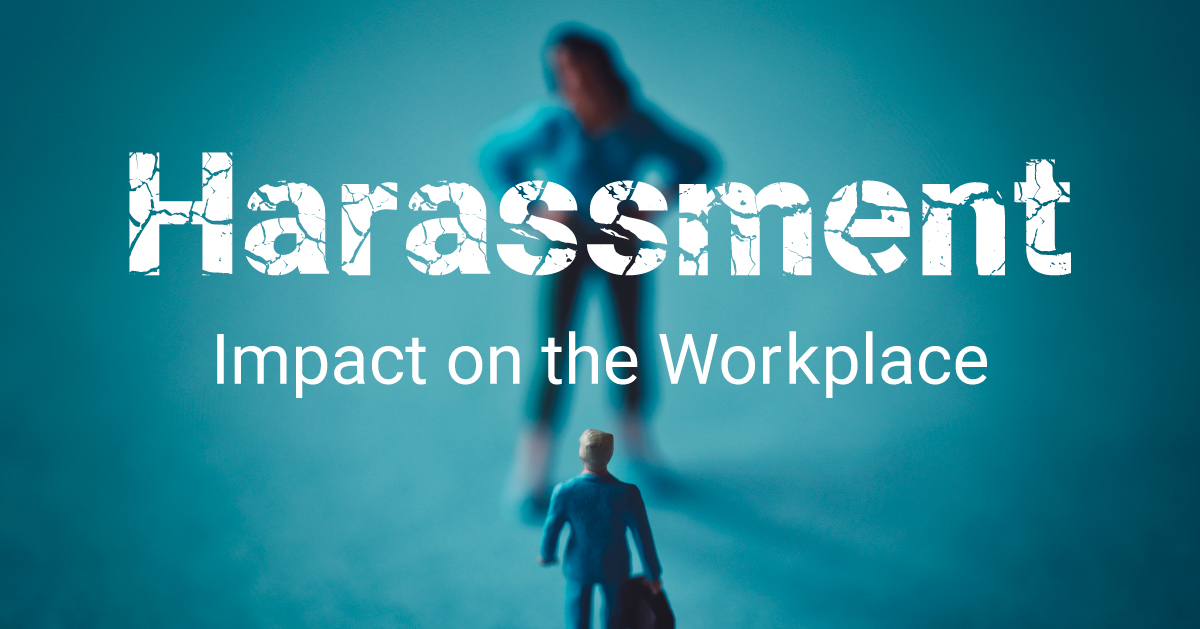Moral Harassment at Work

Unlike sexual and racial harassment, moral harassment is difficult to define due to the invisibility. This represents that perpetrators tend to attack victims without awareness. However, it should be noted that their actions could lead to a leave of absence or resign from their jobs.
Each organization is required to protect employees through effective solutions, but how can you prevent such unwelcoming workplace environment? Now , you are the right place to stop by. This article explores how to protect workers from moral harassment.
Contents
Features of Moral Harassment

Moral harassment is a social issue that occurs in a variety of places including workplace, school and even at home. Recurrent practice of humiliation results in high risks within an organization and cannot be ignored. The following explain the abstract and risks of moral harassment.
What is Moral Harassment?
What is moral harassment?
Moral harassment at work is the act of inflicting psychological distress on workers. This persecution including verbal violence could be a trigger not only to reduce productivity but also to resign from their jobs, deteriorating the working environment.
When it comes to moral harassment, anyone could be a victim or a perpetrator regardless of position or gender because many perpetrators have little awareness toward moral harassment.
The Risks of Moral Harassment
What does moral harassment entail? When any measures are not taken, the victim’s emotional distress could lead to mental illness including depression, psychosomatic disorders, adjustment disorders and post-traumatic stress disorder (PTSD). Sad to say, such symptoms sometimes result in a leave of absence or resign from their jobs.
When it comes to the responsibilities as a company, it may be held liable for damages or other claims. What is worse, the negative reputation of a company can impact on a decline in sales, an increase in job leavers and a shortage of human resources.
There have been cases in which the perpetrators of moral harassment have been charged with crimes such as insult and defamation.
Managing Risks

Proper and prompt actions are required to identify and take appropriate countermeasures when a suspected case is reported. This will prevent low productivity, unmotivated behavior at work, outflow of human resources and so on.
Moral Harassment Components
Attacks that cause emotional distress are typical examples of workplace moral harassment. Specific examples include: denigration of appearance and personality, bad-mouthing of family members, unreasonable rebuke, imposing personal chores, unfair performance evaluations and implication of demotion or restructuring.
Moral harassment is wide-ranging and other components should be also noted. Not only degraded work and isolation but spreading unfavorable rumors, ignorance, and avoidance of invitation for company events are regarded as moral harassment.
In addition, excessive interference with private matters should be mentioned here. Persistent contact with employees on vacations, prying into private affairs and gossipping about matters are all caused by lack of awareness toward moral harassment.
When Moral Harassment Is Suspected
When moral harassment is suspected or reported, it is important to take advantage of consultation services including industrial physicians or other specialists ensuring the victim's privacy.
Unlike power harassment and sexual harassment, moral harassment is difficult to define. However, prompt measures must be adapted after consulting with the victim, perpetrator and third parties.
To protect employees appropriately, collect evidence of the harassing behavior such as emails, text messages, voice recorder, testimonials from other employees.
When the implemented measures are not effective and difficult to resolve the issue within the organization, it is important to contact outside services including legal advisors or other experts.
Back to ContentsPrevent Harassment

Finally, this section explains where to consult and what to do about workplace harassment problems.
Power harassment policies became mandatory for large companies on June 1, 2020, and for small and medium-sized companies on April 1, 2022.
Since there are cases where moral harassment can lead to power harassment, create a workplace environment where workers can work with peace of mind through the formulation of a disciplinary system and the development of internal systems.
Approaches
Clarification of Company Policies
To prevent workplace moral harassment, it is important for companies to make it clear that they will not tolerate moral harassment. Specifically, the company should clearly state its policy against moral harassment in its employment regulations and collective labor agreement, and work to inform and educate employees about it.
Because moral harassment can occur regardless of rank and gender, it should not be limited to managers and leaders, but should be communicated to all employees. It is also advisable to establish disciplinary rules for perpetrators.
Establishment of a consultation service
It is also effective to set up a consultation service as a measure to prevent harassment and make it known to workers. Create posters with information on how to use the service and cooperate with the labor union so that employees who have concerns can consult with the service at an early stage.
In order to promote the active use of this service, it is also required to protect the privacy of the consultants and to inform them that they will not be treated unfairly because of the fact that they have consulted with us.
Developing an internal investigation system
Anti-harassment measures include establishing an internal investigation system in case a problem arises. Prompt fact-finding upon receipt of a complaint, disciplinary action against the harasser, and measures to prevent recurrence will ensure that employees can work with peace of mind.
Conduct harassment training
Conducting harassment training is an effective way to prevent workplace harassment. It is possible to disseminate a company's stance on harassment within the company, and repeated training can lead to the acquisition of correct knowledge of harassment and early detection of problems.
There are two main ways to conduct harassment training: in-house or outsourced. e-learning systems are recommended because they allow you to optimize the training content for your company and reduce costs compared to outsourcing.
Back to ContentsSummary
Many companies understand the importance of taking measures against harassment, including moral harassment, but have been slow to take action. This is an opportunity to take action and protect a safe and secure working environment for your employees.
Please use the harassment training contents of "learningBOX ON" when conducting in-house training on harassment.
learningBOX is a cloud-based elearning platform
and you can easily build training courses online.
Created content will be delivered to employees and you can track their learning progress.
There will be something you can do to improve your work environment.
▼You may also like:
Back to Contents


-
Discover rich featuresService Guide
-
Feel free to contact usGet in Touch
-
Try our Free PlanTry Free Plan










